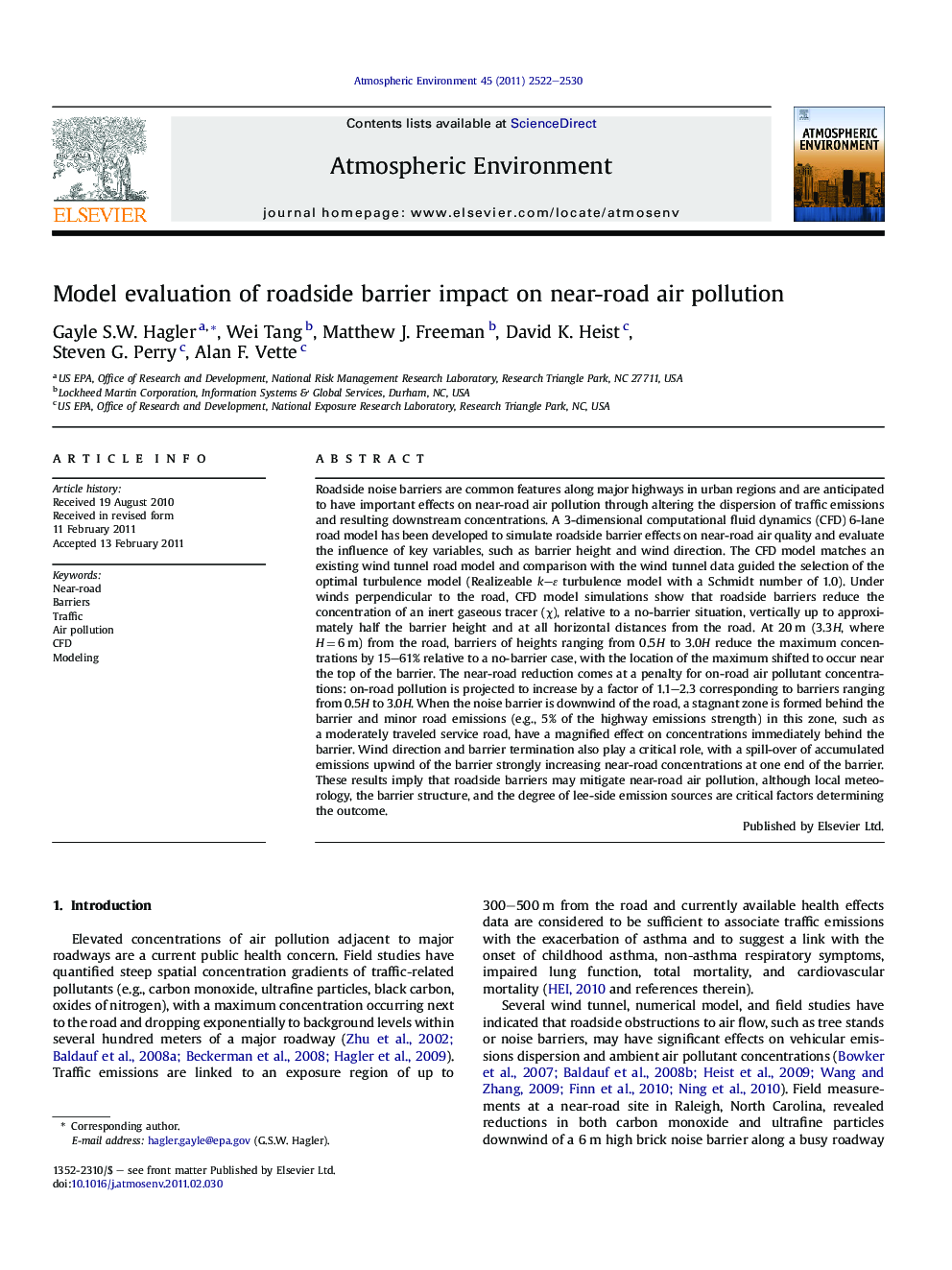| کد مقاله | کد نشریه | سال انتشار | مقاله انگلیسی | نسخه تمام متن |
|---|---|---|---|---|
| 4439873 | 1311036 | 2011 | 9 صفحه PDF | دانلود رایگان |

Roadside noise barriers are common features along major highways in urban regions and are anticipated to have important effects on near-road air pollution through altering the dispersion of traffic emissions and resulting downstream concentrations. A 3-dimensional computational fluid dynamics (CFD) 6-lane road model has been developed to simulate roadside barrier effects on near-road air quality and evaluate the influence of key variables, such as barrier height and wind direction. The CFD model matches an existing wind tunnel road model and comparison with the wind tunnel data guided the selection of the optimal turbulence model (Realizeable k–ɛ turbulence model with a Schmidt number of 1.0). Under winds perpendicular to the road, CFD model simulations show that roadside barriers reduce the concentration of an inert gaseous tracer (χ), relative to a no-barrier situation, vertically up to approximately half the barrier height and at all horizontal distances from the road. At 20 m (3.3H, where H = 6 m) from the road, barriers of heights ranging from 0.5H to 3.0H reduce the maximum concentrations by 15–61% relative to a no-barrier case, with the location of the maximum shifted to occur near the top of the barrier. The near-road reduction comes at a penalty for on-road air pollutant concentrations: on-road pollution is projected to increase by a factor of 1.1–2.3 corresponding to barriers ranging from 0.5H to 3.0H. When the noise barrier is downwind of the road, a stagnant zone is formed behind the barrier and minor road emissions (e.g., 5% of the highway emissions strength) in this zone, such as a moderately traveled service road, have a magnified effect on concentrations immediately behind the barrier. Wind direction and barrier termination also play a critical role, with a spill-over of accumulated emissions upwind of the barrier strongly increasing near-road concentrations at one end of the barrier. These results imply that roadside barriers may mitigate near-road air pollution, although local meteorology, the barrier structure, and the degree of lee-side emission sources are critical factors determining the outcome.
► Traffic emissions dispersion in the presence of a roadside barrier is evaluated using a computational fluid dynamics model.
► Under crosswind conditions, barriers reduce downwind near-road maximum concentrations, but increase on-road concentrations.
► Minor emissions (e.g., service road) in the stagnant zone downwind of a barrier can increase near-road pollution levels.
► Oblique winds can transport accumulated on-road emissions around the edge of a barrier and create a local high concentration zone.
Journal: Atmospheric Environment - Volume 45, Issue 15, May 2011, Pages 2522–2530